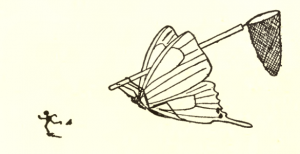
What Caught Our Attention: We’ve been following cancer scientist Fazlul Sarkar for years, as he (unsuccessfully) sought to expose the identity of a PubPeer commenter who he believes cost him a job offer. In November 2016, the ACLU released a copy of a misconduct investigation report compiled by Wayne State University, which concluded Sarkar ran a laboratory “culture” of “fabrication, falsification and/or plagiarism of data,” and recommended the retraction of 42 papers and correction of 10 papers. He’s now lodged his 19th retraction.
The published notice — for a 2012 paper — mentions problems in figures 1a and 3; the investigative report provides more details (and suggests additional problems not mentioned in the retraction notice):
The Committee finds, in Allegation 18, several misrepresentations in Paper 9 in describing the relationship between Figure 1A and Figure 3. The Committee concludes that Dr. Sarkar knowingly and intentionally misrepresented the results by fabricating and/or falsifying the data in Figure 1A, by failing to report copying lanes from Figure 3 in Figure 1A, and by using a beta-actin control band unrelated to the other protein bands. By a preponderance of the evidence, the Committee concludes that this constitutes research misconduct…
And:
The Committee finds, in Allegations 19, 20 and 20a, that the “overlaid/pasted” lanes in the combined treatment condition for the Ras GTPase activity bands in Figures 4B, 5B, and 6B in Paper 9 are from the same experiment but that images from a 5-minute exposure are pasted onto bands from 1-minute exposures. The Committee concludes that Dr. Sarkar, knew about and accepted cutting and pasting in this instance and as common practice in his lab, and that Ms. Ali did the cutting and pasting in this instance. The Committee notes that these misrepresentations are ironic since substituting the 5-minute exposure image actually under-estimated the predicted impact of CDF on Ras GTPase activity. By a preponderance of the evidence, the Committee concludes that Dr. Sarkar recklessly published falsified results in Figures 4B, 5B and 6B in Paper 9, and that this constitutes research misconduct…
More than half of the papers flagged by the Wayne State report remain intact; fourteen appear in the journal Cancer Research.
Journal: Cancer Letters
Authors: Shadan Ali, Aamir Ahmad, Amro Aboukameel, Bin Bao, Subhash Padhye, Philip A. Philip, and Fazlul H. Sarkar
Affiliations: Wayne State University School of Medicine, MI, USA; Abeda Inamdar Senior College, India
This article has been retracted at the request of the Editor in Chief. An investigation by Wayne State University identified a discrepancy between the data reported in Figures 1 A and 3 and the original collected data. The investigation committee concluded that this undermined the scientific basis of the publication, that no credible replacement data were available, and advised that the publication should be retracted.
Date of Article: January 2012
Times Cited, according to Clarivate Analytics’ Web of Science: 41, 8 since 2016
Date of Notice: December 22, 2017
Hat tip: Khalid El Bairi
Like Retraction Watch? Consider making a tax-deductible contribution to support our growth. You can also follow us on Twitter, like us on Facebook, add us to your RSS reader, sign up on our homepage for an email every time there’s a new post, or subscribe to our daily digest. Click here to review our Comments Policy. For a sneak peek at what we’re working on, click here. If you have comments or feedback, you can reach us at [email protected].
“The investigation committee concluded that this undermined the scientific basis of the publication, that no credible replacement data were available, and advised that the publication should be retracted.”
Yuck.
I do not believe that ethics committees or journals should allow falsified or fabricated data to be replaced. The paper should be retracted (in toto).
Unfortunately, allowing authors to replace figures is much easier that pursuing misconduct charges, especially if the authors sue or threaten to sue per the instant example. Institutions and Journals preserve the purity of their brands and those that perpetrated the misconduct scoot away free.
The losers are the whistle-blowers [likely suffering from getting their own reputations besmirched] and other scientists trying to compete for scarce grant funding with laboratories with a ““culture” of “fabrication, falsification and/or plagiarism of data.””
I think the only hope lies in sites like RW and a few rare journalists to shed light on the misconduct when it occurs.